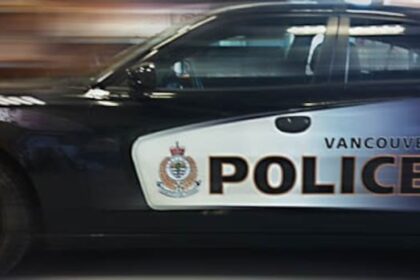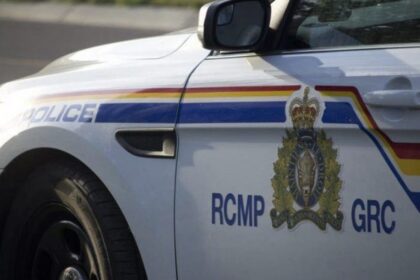As snowbirds flock to the border to escape the Canadian winter, many are encountering the new U.S. registration requirement for the first time.The rule, which took effect in April under the Trump administration, makes it mandatory for Canadians staying longer than 29 days to register with the U.S. government.The regulation sounds simple, but it’s actually complex. Not all long-term travellers need to register, and for those who do, there’s more than one way to complete the process. Further complicating matters, there’s no central U.S. government website that lays out all the options for travellers, and those who register at the border will likely be photographed, fingerprinted and charged $30 US. “It’s confusing, there’s no common sense in how they’re rolling this out,” said U.S. immigration lawyer, Len Saunders, whose office sits close to the border in Blaine, Wash. Saunders says he receives several calls per day from Canadians who are desperate for clarity about the new rule. “Nobody knows how this works.”To help cut down on the confusion, here’s the information CBC News has gathered about the new rules. Option 1: Register at the borderTypically, air passengers are exempt from the registration requirement because they’re generally issued an I-94, an electronic arrival record. However, travellers who cross at land borders often don’t get one.Upon arrival, all travellers can check this U.S. Customs and Border webpage to see if they automatically received an I-94 — which is typically valid for six months.Travellers can check online if they were automatically issued an I-94. If they did get one, their record will show their arrival date plus an ‘Admit Until’ date — the date they must leave the country, typically six months after arrival. (U.S. Customs and Border Protection)To ensure they meet the registration requirement, land travellers can pre-apply online for their I-94 within seven days of entering the U.S., or they can complete the entire process at the border. U.S. Customs and Border Protection (CBP) told CBC News that whichever method they choose, travellers will be fingerprinted, photographed and charged a $30 US processing fee. “These measures are required under U.S. immigration law to enhance border security, verify travellers’ identities, and ensure compliance with U.S. entry and exit requirements,” said CBP spokesperson Jessica Turner in an email.CBC News interviewed five snowbirds who obtained their I-94 at the border. They each said they were photographed, fingerprinted and charged the fee. Three said border officers offered to complete the process at the border, and that they accepted. The other two, including Brenda Paige of Calgary, said they weren’t given a choice. “It wasn’t like, ‘Would you like to have your photograph [taken]?” said Paige, who crossed the border from Alberta on Oct. 2 with her husband, Dan. “It was just, this is the way it’s done and you just do it and you fall in line. We want to keep coming back every year, so we just did it.”WATCH | Snowbirds fingerprinted, photographed at border:Snowbirds fingerprinted at U.S. land borders Numerous Canadian snowbirds who’ve crossed at a land border to the U.S. were told they needed to be photographed and fingerprinted as part of a new registration process.U.S. immigration lawyer Jennifer Behm says border officers determine how they deal with long term travellers. “They have the full discretion on how they want to inspect and admit Canadians.”Saunders believes most border officers will let snowbirds enter without registering at the border, because they don’t have the resources to process I-94s for everyone. “They don’t have the officer capacity, they don’t have the parking capacity for hundreds of campers,” he said. “I don’t think they want to deal with it, because it’s a logistical nightmare.”Several snowbirds told CBC News, and many more have reported on social media, that they sailed through the land border with no mention of a registration requirement.When Canadian snowbird Shelton Papple entered the U.S. from Ontario, he said the border officer didn’t mention the registration requirement. (Submitted by Shelton Papple)Shelton Papple of Brantford, Ont., entered the U.S. from Ontario on Nov. 3. The snowbird said the border officer asked him where in the U.S. he was headed, but didn’t ask how long he planned to stay. “I told him I’m going to Fort Myers, Florida, and he … didn’t say anything about anything,” said Papple. “I would say the total time being there was less than a minute.”Option 2: Register in the U.S.Snowbirds who cross the border without being issued an I-94 should still make sure to register, said Saunders. Those who don’t could face fines of up to $5,000 US, or jail time. Saunders says officials with U.S. Immigration and Customs Enforcement (ICE) are unlikely to patrol gated snowbird communities in Florida. But he notes that the Trump administration is taking a tough stance on unauthorised immigrants. “Who knows under this administration what could happen?”Saunders and Behm say snowbirds who don’t have an I-94 can meet the registration requirement when in the U.S. by filling out a U.S. Citizenship and Immigration Services (USCIS) form online called G-325R. The form is lengthy, but travellers only have to complete the sections noted with an asterisk. They must provide a U.S. address, but there’s no fee and no fingerprinting requirement for Canadians.“Don’t be too intimidated by the G-325,” said Behm. “It’s not an overly cumbersome application.”Because he hadn’t received an I-94, CBC News told Papple about the G-325R form, which he completed at his winter home in Fort Myers. Papple says he worries about snowbirds who arrive in the U.S., unaware of the registration requirement. “Most people [coming] down here wouldn’t have a clue what to do, not a clue.”A warning about the G-325R formSaunders, the immigration lawyer, warns that if snowbirds leave the U.S. temporarily during their winter stay, their G-325R form is no longer valid.If you’re staying for longer than 29 days upon your return, “you’ve got to redo it,” he said. However, snowbirds who return to the U.S. by plane likely won’t have to complete the form again, as they should be automatically issued an I-94.Snowbirds David and Gerilee Kermack of Busby, Alta., learned the hard way that the G-325R form can have a short shelf-life. The couple said that when they entered the U.S. from B.C. last month, the border officer didn’t offer to process their 1-94s, but instead told them about the G-325R form. After taking a day-trip to Mexico, Canadian snowbirds David and Gerilee Kermack discovered that the registration form they completed for their stay in the U.S. was no longer valid. (Submitted by Gerilee Kermack)The Kermacks dutifully filled it out once they arrived at their destination in Arizona. But when they returned to the U.S. following a one-day road trip to Mexico on Nov. 3, they learned that their registration was no longer valid.David Kermack says the border officer told them “it’s basically like a contract. If you leave, it expires, essentially.” He says, this time, the officer at the southern border insisted they apply for their I-94 on site, which included being fingerprinted, photographed and paying $30 US each.Following their experience, Kermack says that when they enter the U.S. next year, they plan to apply for their I-94 at the northern land border. “The I-94 expires in six months from the date of entry and you can come and go as you please,” he said.What about Nexus members?There is confusion over whether Nexus card holders can bypass the registration requirement. CBP told CBC News on Oct. 21 that they’re exempt. However, on Nov. 6, CBP said Nexus members aren’t exempt. The latter appears to be correct as snowbird and Nexus member Maureen Adderley from Midland, Ont., reported that when she arrived at the U.S. border on Wednesday, a border officer advised her that she still needed to register. Adderley chose to do so at the border and says she waited for an hour to be photographed and fingerprinted.A note about facial biometricsThe U.S. announced a new rule last month, which will make it mandatory, starting on Dec. 26, for Canadians to be photographed when entering and exiting the country at checkpoints that have facial biometrics technology in place. The technology involves photographing travellers and comparing their faces to photos on their travel documents. It can currently be found at all arrivals and at dozens of departure sites at international U.S. airports. The rule, part of America’s expanding facial biometrics program, is separate from the CBP requirement that travellers applying for an I-94 be fingerprinted and photographed by border officers. The United States expects to fully implement facial biometrics at land borders next year. CBP told CBC News the technology will capture images of travellers inside vehicles. WATCH | U.S. to photograph Canadians entering, leaving the U.S.:U.S. to photograph all travellers entering and leaving the countryStarting Dec. 26, travellers to and from the U.S. will be subject to mandatory photographs, with full implementation by 2026.
Tuesday, 23 Dec 2025
Canada – The Illusion
Search
Have an existing account?
Sign In
© 2022 Foxiz News Network. Ruby Design Company. All Rights Reserved.
You May also Like
- More News:
- history
- Standing Bear Network
- John Gonzalez
- ᐊᔭᐦᑊ ayahp — It happened
- Creation
- Beneath the Water
- Olympic gold medal
- Jim Thorpe
- type O blood
- the bringer of life
- Raven
- Wás’agi
- NoiseCat
- 'Sugarcane'
- The rivers still sing
- ᑲᓂᐸᐏᐟ ᒪᐢᑿ
- ᐅᑳᐤ okâw — We remember
- ᐊᓂᓈᐯᐃᐧᐣ aninâpêwin — Truth
- This is what it means to be human.
- Nokoma











